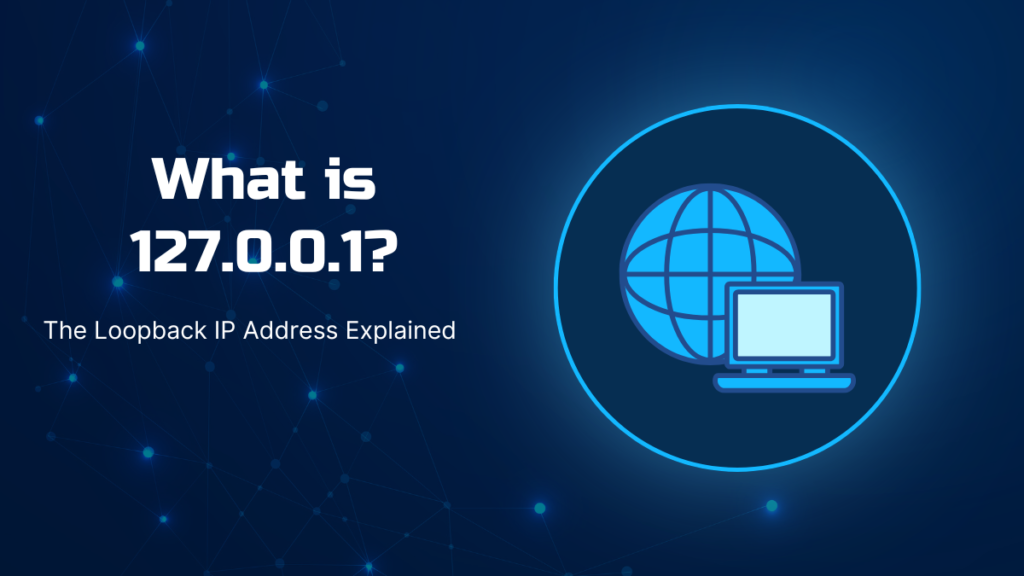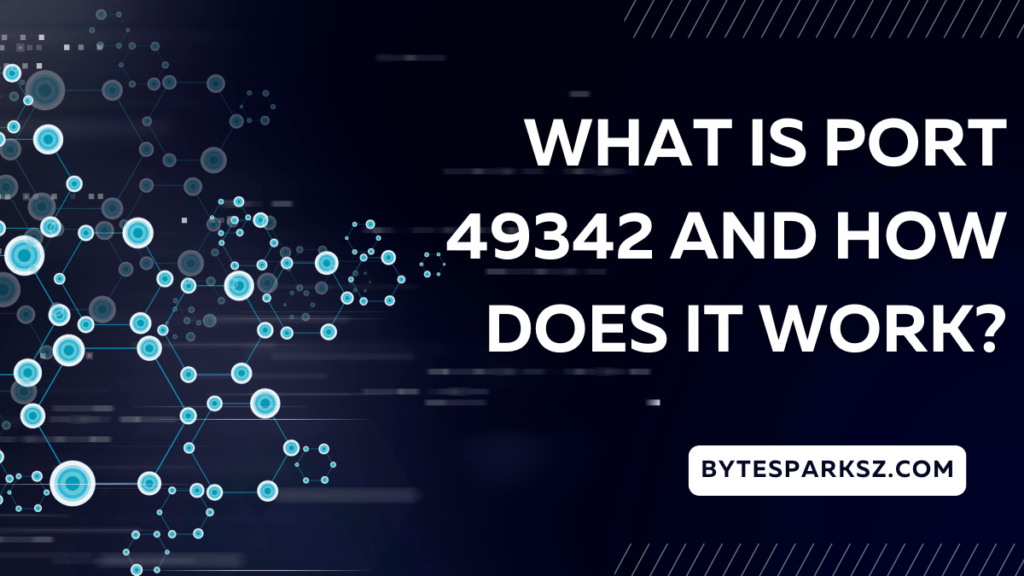
In the world of networking and computing, IP addresses and port numbers are fundamental concepts that enable devices to communicate with each other. The term 127.0.0.1:49342 refers specifically to a loopback IP address paired with a port number, often encountered during local server setups or testing environments. This article will delve into the meaning of this IP address, its importance in the field of networking, and how it functions in various scenarios. By the end of this article, you will have a comprehensive understanding of 127.0.0.1 and port 49342, as well as their applications in different networking contexts.
What is 127.0.0.1? The Loopback IP Address Explained

Understanding the Basics of IP Addresses
An IP (Internet Protocol) address is a unique identifier assigned to each device connected to a network, enabling it to communicate with other devices. IP addresses come in two main types: IPv4 and IPv6. The IPv4 format is composed of four sets of numbers separated by dots (e.g., 192.168.0.1), whereas IPv6 uses a more complex structure to accommodate more devices globally.
The address 127.0.0.1 is a special type of IPv4 address known as the loopback address. It’s reserved for the device itself, meaning any requests sent to this address are directed back to the local machine rather than going out over the internet.
The Purpose of Loopback Addresses
Loopback addresses are primarily used for testing and diagnostics on the local machine. When an application or service sends data to 127.0.0.1, it effectively communicates with itself. This is a valuable tool for developers and system administrators who need to test network applications, servers, or other services without involving external networks or the internet.
In most cases, 127.0.0.1 is the default loopback address, but the entire range of addresses from 127.0.0.1 to 127.255.255.255 is reserved for loopback functions.
What is Port 49342 and How Does it Work?

Introduction to Port Numbers
In networking, a port number is a logical endpoint used to identify specific processes or types of network services. Port numbers range from 0 to 65535 and are divided into various categories:
- Well-Known Ports (0-1023): Used by standard services (e.g., HTTP uses port 80, HTTPS uses port 443).
- Registered Ports (1024-49151): Assigned for specific services by the Internet Assigned Numbers Authority (IANA).
- Dynamic or Private Ports (49152-65535): Generally used for temporary connections, such as client-side applications.
In the case of 127.0.0.1:49342, 49342 falls within the dynamic range, meaning it is often used for temporary communication during testing and development.
The Role of Port 49342 in Local Development
When an application binds to 127.0.0.1:49342, it establishes a temporary listening point on the local machine. This allows a developer to interact with the application or server on this port, effectively creating a dedicated space for testing without interfering with other services.
Port numbers like 49342 are ideal for local testing since they are less likely to conflict with other applications, making them perfect for troubleshooting and development.
Use Cases and Applications of 127.0.0.1:49342 in Networking

1. Local Server Testing and Development
One of the most common uses of 127.0.0.1 addresses and dynamic ports like 49342 is in local server testing. Developers set up services to run on their machine without exposing them to the internet, allowing them to test software in a controlled environment. This setup enables developers to:
- Test server configurations and functionalities.
- Debug issues with applications in isolation.
- Ensure compatibility with different software components.
For instance, a web developer may configure a local server to listen on 127.0.0.1:49342 and access it via a web browser to test how the site performs before deploying it to a live server.
2. Database and API Testing
Testing database connections and APIs locally is another common use case. Applications that rely on databases or third-party APIs can be configured to connect to a mock database or API running locally on 127.0.0.1. By doing this, developers can:
- Validate database queries and transactions.
- Test API endpoints without external dependencies.
- Troubleshoot and debug network communication issues locally.
For example, a developer might use 127.0.0.1:49342 as the address for a local database to test query performance and response handling.
3. Application Debugging and Network Diagnostics
Loopback addresses like 127.0.0.1 combined with specific port numbers are essential tools for debugging network applications. Tools like Telnet, curl, and various network debugging software rely on loopback addresses to simulate and analyze network interactions. This practice helps identify potential issues in the network stack, application configuration, or firewall settings.
Security Considerations for Using 127.0.0.1:49342
1. Ensuring Local-Only Access
One of the significant security benefits of using 127.0.0.1 is that it is inherently restricted to the local machine. This means that any application or service running on 127.0.0.1:49342 is not accessible from external networks. This isolation ensures that local testing does not expose sensitive data or configurations to potential attackers on the internet.
2. Configuring Firewalls and Permissions
While 127.0.0.1:49342 is generally secure, it’s essential to configure firewall rules and user permissions to prevent unauthorized access. For example, developers should verify that no unintended software or users have access to services running on specific ports to prevent potential misuse or leaks of sensitive data.
3. Avoiding Conflicts with Other Applications
When working with dynamic ports like 49342, it is crucial to ensure that no other application on the system is using the same port. Conflicts can result in unexpected behavior or security risks if sensitive information is exposed unintentionally. Assigning unique port numbers for different applications minimizes the risk of conflicts.
Setting Up a Local Server on 127.0.0.1:49342
To set up a local server using 127.0.0.1:49342, follow these general steps:
- Choose a Server Environment: Install a web server software, such as Apache, Nginx, or a development framework like Node.js or Django, to handle HTTP requests locally.
- Configure the Server to Listen on 127.0.0.1:49342: Modify the server’s configuration files to bind it to 127.0.0.1 on port 49342. For example, in Apache, this can be done by setting:mathematicaCopy code
Listen 127.0.0.1:49342 - Test the Setup: Access the server in a web browser by entering 127.0.0.1:49342. If configured correctly, you should see your server’s response without needing internet access.
- Monitor Logs for Troubleshooting: Use server logs to diagnose any issues that arise during the testing process. Logs will provide information on access attempts, errors, and any network-related warnings.
Conclusion: The Importance of 127.0.0.1:49342 in Local Testing and Development
The combination of 127.0.0.1 and dynamic ports like 49342 is essential for local development and testing. This address and port pairing provides a safe, isolated environment where developers can run applications without exposing them to the internet, ensuring both security and flexibility. From server testing to application debugging, 127.0.0.1:49342 serves as a powerful tool for anyone working in networking, software development, or systems administration.
Using 127.0.0.1:49342 efficiently enables better control over the testing process and helps prevent potential issues before deploying applications in production environments. Whether you’re a developer testing a new web app or a network engineer diagnosing application behavior, understanding how to leverage loopback addresses and port numbers is crucial to effective system management.




